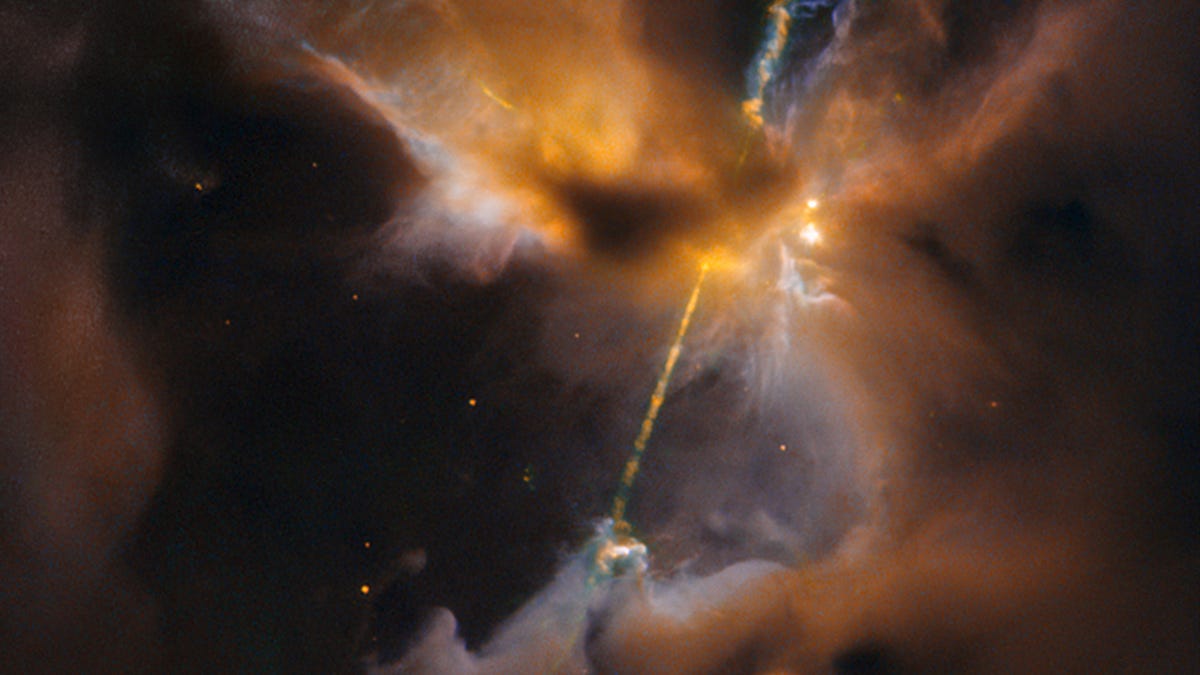Hubble spots celestial lightsaber in a newborn star
The Star Wars universe gets closer to Earth as NASA shares an image of a young star spitting out two jets that look, the space agency says, a lot like a lightsaber right here in our own galaxy.
The folks over at NASA must be pretty excited about this week's opening of "Star Wars: The Force Awakens." They're seeing lightsabers in the stars.
A new Hubble image shows a spectacular cosmic structure inside an area known as a birthing ground for new stars. NASA describes the formation as a "cosmic, double-bladed lightsaber" with a "Jedi-like cloak of dust" near the center. All it takes is an active imagination and a healthy love for Star Wars to see where NASA is coming from on this.
NASA released the Hubble picture today. The image actually shows a baby star with two jets extending out in opposite directions. In our Star Wars-crazed world, those twin jets look an awful lot like a lightsaber, the sort carried by Darth Maul, the black-and-red-faced, horned Sith Lord who first appeared in the prequel film "The Phantom Menace" in 1999.
If you want to expand the imagery, then you can imagine the cloudy pillar that curves down to the middle of the image as an arm and hand reaching around the hilt of the lightsaber.
The Hubble team explains what's happening here: "Gas from a surrounding disk rains down onto the dust-obscured protostar and engorges it. The material is superheated and shoots outward from the star in opposite directions along an uncluttered escape route -- the star's rotation axis." Boom...lightsaber action.
The lightsaber is located just 1,350 light-years away from Earth in an area called the Orion B molecular cloud complex, a region of nebulae, young stars, gas and dust located in the constellation of Orion. The Orion cloud complex is also home to the famous Horsehead Nebula.
It's no surprise that Hubble scientists have Star Wars on their minds. "Science fiction has been an inspiration to generations of scientists and engineers, and the film series Star Wars is no exception," said NASA's John Grunsfeld, a veteran astronaut who flew on five space shuttle missions.


